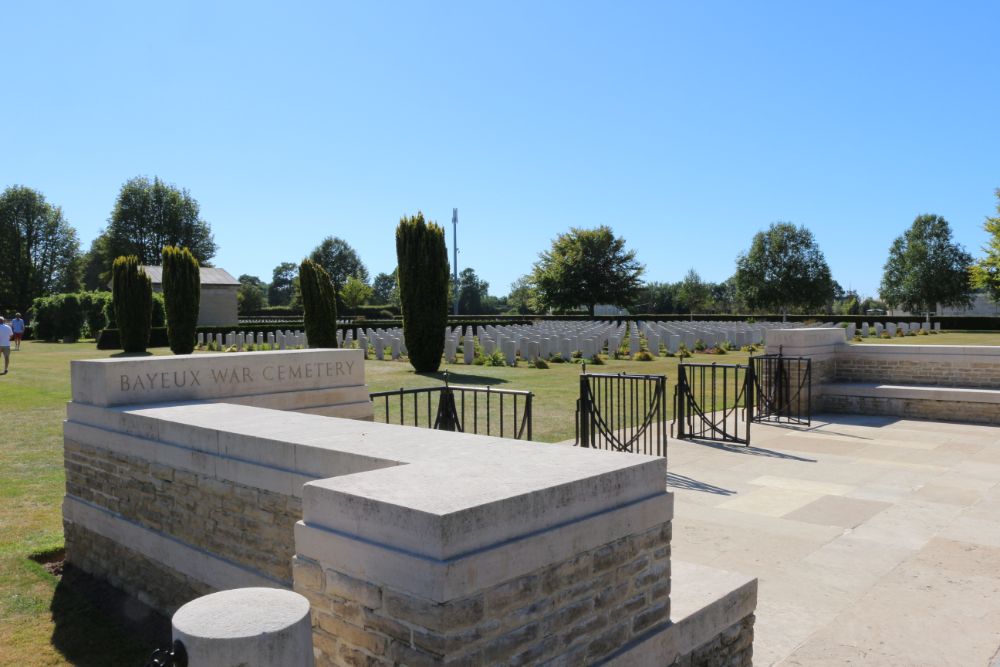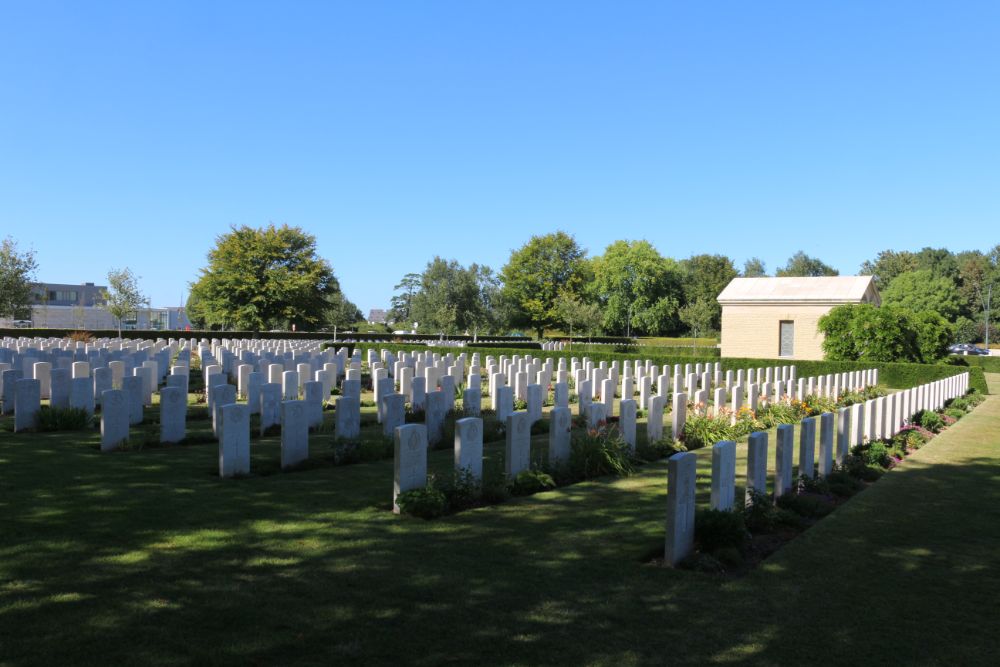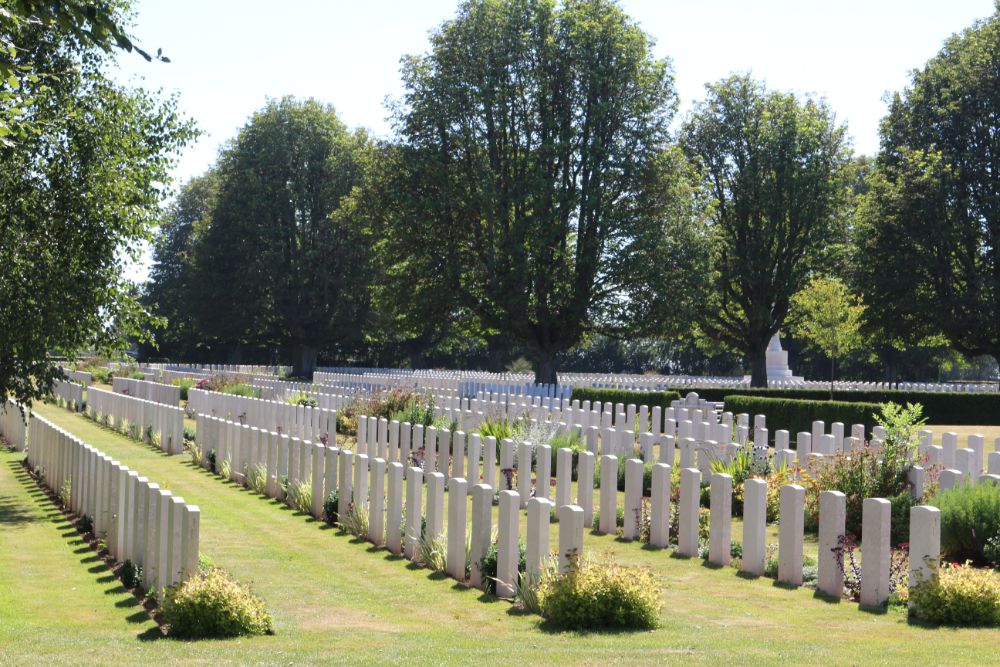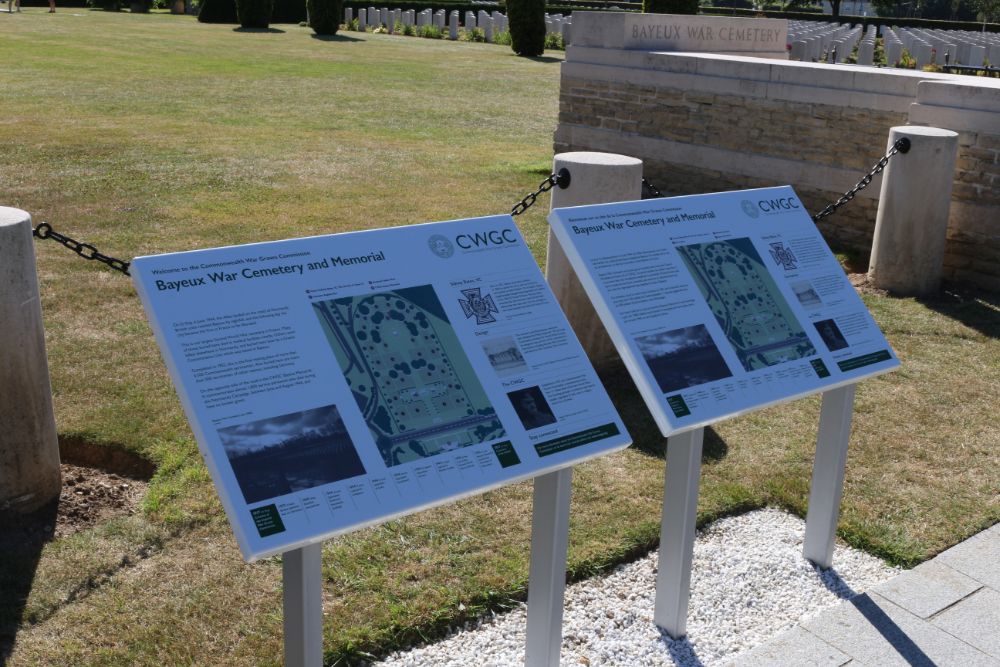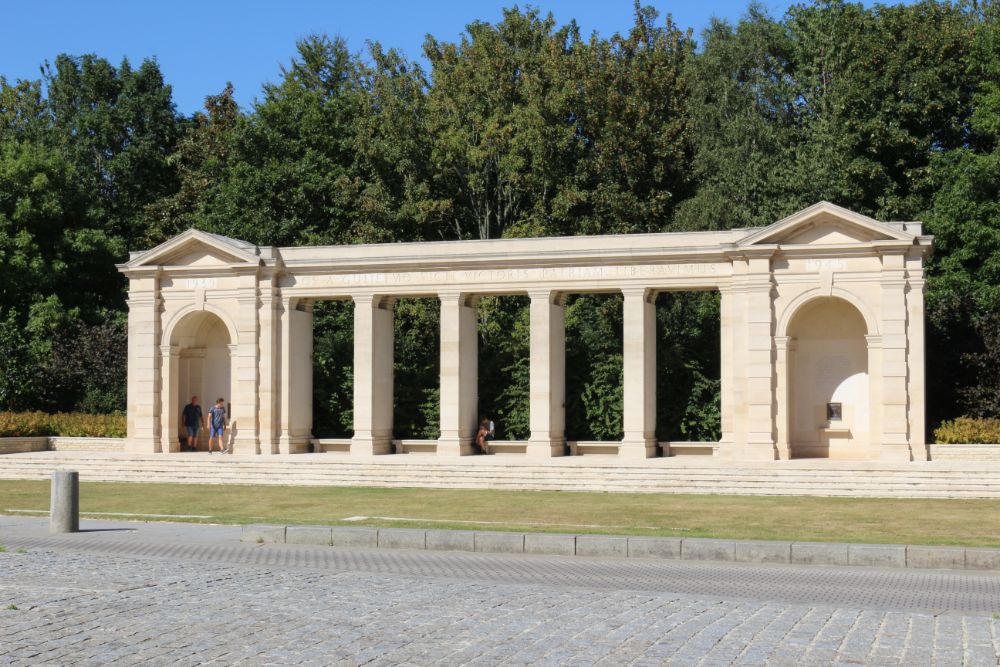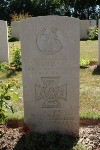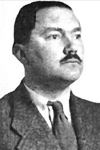Commonwealth War Cemetery Bayeux
The Bayeux War Cemetery, established in 1944 and completed in 1952, is the largest Second World War cemetery of Commonwealth soldiers in France. It is located on the south-western outskirts of Bayeux, Normandy, and contains 4,648 burials, most of them casualties of the Normandy campaign following the D-Day landings. Opposite the cemetery stands the Bayeux Memorial, which commemorates more than 1,800 Commonwealth servicemen who died in Normandy and have no known grave.
The grounds were formally assigned to the United Kingdom in perpetuity by the French government, in recognition of the sacrifices made by the British Empire in the defence and liberation of France. While the majority of those buried are from the Commonwealth, the cemetery also contains over 500 graves of other nationalities, most of them German.
Cemetery description:
he Bayeux War Cemetery, established in 1944 and completed in 1952, is the largest Commonwealth Second World War cemetery in France. Designed by Philip D. Hepworth for the CWGC, it combines formal axial planning with a garden-like setting to balance solemnity and peace. The layout is organized around a central axis linking the Cross of Sacrifice and Stone of Remembrance, with rows of uniform Portland stone headstones set within carefully maintained lawns and perennial borders.
Low stone walls and a modest entrance gateway define the boundary, while paths and sightlines ensure clarity and accessibility. The horticultural scheme softens the geometry, providing seasonal variation without obscuring inscriptions. The cemetery’s scale—4,648 burials, including over 500 of other nationalities, mostly German—is managed through strict symmetry and rhythm, preserving intimacy despite its size.
Opposite stands the Bayeux Memorial, commemorating more than 1,800 missing, creating a unified commemorative ensemble.
Notable Graves:
Among those interred is Corporal Sidney Bates of the 1st Battalion, The Royal Norfolk Regiment, who was posthumously awarded the Victoria Cross for his gallant actions near Sourdeval on 6 August 1944. The cemetery also contains the graves of five members of a single aircrew who died on 10 June 1944: Royal Air Force Flying Officer B.E. Bell (pilot), Flying Officer H.D. Clark (air gunner), Sergeant J. Holden (wireless operator/air gunner), Sergeant J.J. Reed (air gunner), and Royal Australian Air Force Flying Officer D. MacFadyen. Their graves, placed side by side, stand as a poignant reminder of the shared sacrifices of the Commonwealth air forces.
Do you have more information about this location? Inform us!
Source
- Text: Commonwealth War Graves Commission
- Photos: Lennard Bolijn
Nearby
Museum
- Musée-Mémorial de la Bataille de Normandie - Bayeux
- Musée-Mémorial du Général de Gaulle - Bayeux
- Musée des Épaves sous-marines du Débarquement - Commes (Port-en-Bessin)
Point of interest
- Churchill Crocodile Tank - Bayeux
- M10 Wolverine Tank Destroyer - Bayeux
- Scraper S-112 Bayeux - Bayeux
Monument
- Mémorial des Reporters de Bayeux - Bayeux
- Military Police Memorial - Bayeux
- Place Général de Gaulle Memorial - Bayeux
Cemetery
- Commonwealth Memorial of the Missing Bayeux - Bayeux
- Commonwealth War Graves Bayeux D613 - Bayeux
- Commonwealth War Grave Sully - Sully
